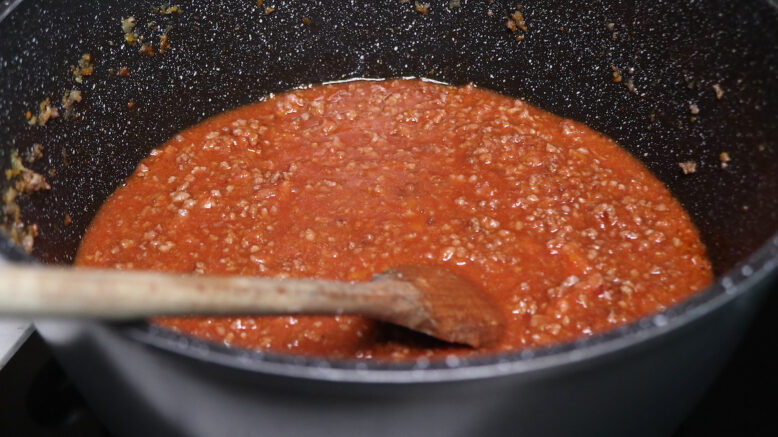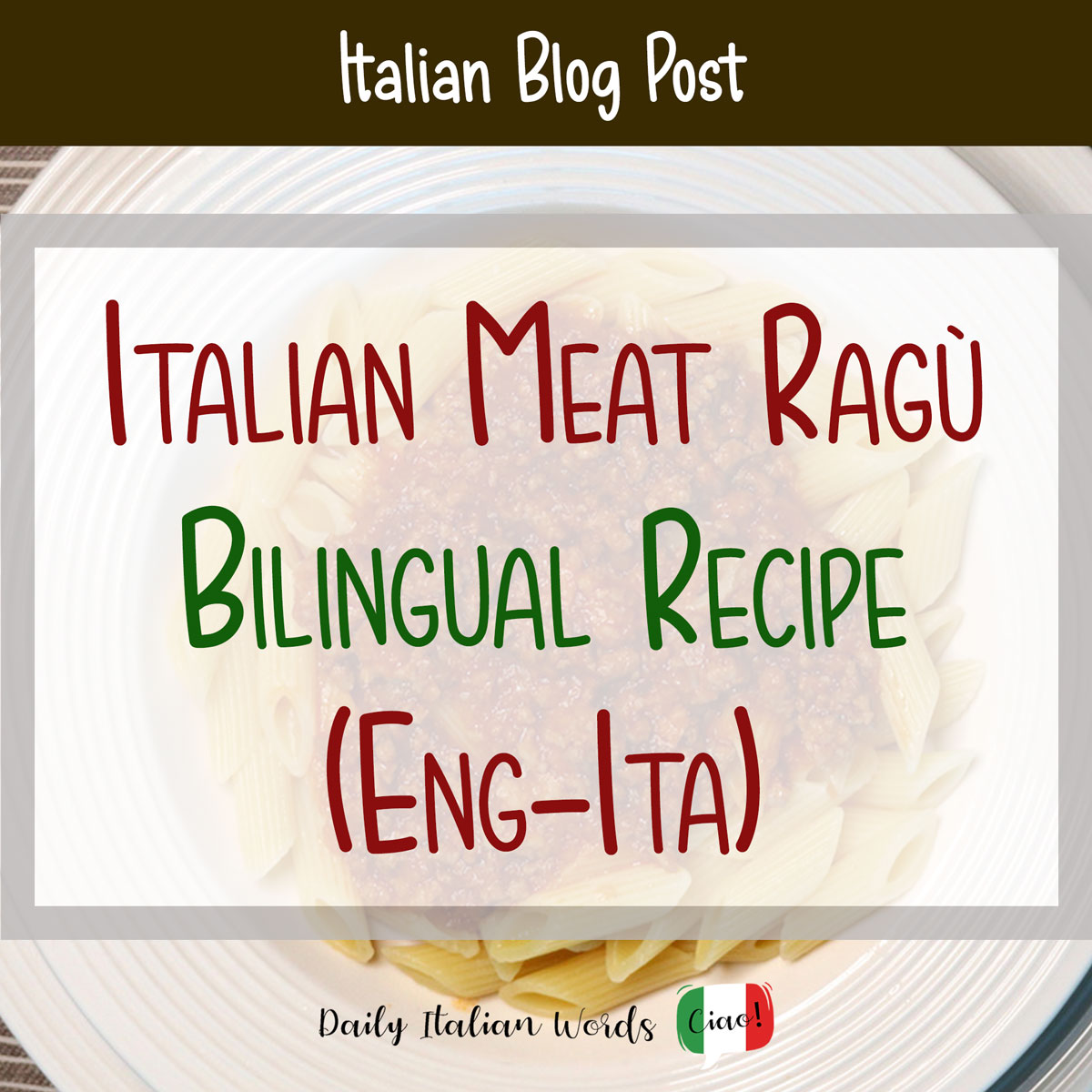Bolognese sauce, also known as meat sauce, is one of the most famous condiments in Italy and around the world.
Bolognese sauce, also known as Bolognese sauce, is one of the most famous condiments not only in Italy, but in the world.
Bolognese usually consists of tomato sauce and minced meat, cooked over a slow fire, and its taste varies depending on the region of Italy.
Bolognese usually consists of tomato sauce and minced meat, slowly cooked, and its taste varies depending on the region of Italy.
Various ragù
Various types of meat sauces
The most famous meat sauces in Italy are Bolognese and Neapolitan.
The most famous meat sauces in Italy are Bolognese and Neapolitan.
The difference between Bolognese and Neapolitan meat sauce is the preparation of the meat.
The difference between Bolognese and Neapolitan meat sauce is how the meat is prepared.
Bolognese Bolognese is a “soffritto” made with minced beef and pork, and chopped vegetables such as celery, carrots and onions. It is mainly used as a sauce for fresh or dried pasta, but also pairs well with polenta.
Bolognese Bolognese uses minced beef and pork paired with sautéed chopped vegetables such as celery, carrots and onions. It is primarily considered a condiment for fresh or dried pasta, but it also goes well with polenta.
Neapolitan meat sauce, on the other hand, uses unshredded beef and pork, basil, rich tomato sauce, and onions. The sauce is so rich that, in addition to being a pasta condiment, it can also be considered a dish in its own right, requiring about four hours of slow cooking.
Neapolitan Bolognese, on the other hand, uses unground beef and pork slices, basil, lots of tomato sauce and onions. The sauce is so rich that, in addition to being used as a condiment for the pasta, it can also be considered a dish in its own right, and it needs to be simmered for about four hours.


Origin of Ragu
Origin of Ragu
The origin of the word comes from the French “ragout,” a noun derived from the verb “ragouter” (with a circumflex on the “u”), which means to stimulate the appetite.
The origin of the word comes from the French “ragout”, a noun derived from the verb “ragoûter” which means to restore appetite.
In Italy, Bolognese has evolved into a traditional pasta sauce for festive occasions, cementing its status as a quintessential holiday dish.
In Italy, Bolognese sauce has become a traditional condiment for pasta during the holidays and has become a holiday dish par excellence.
Ingredients and sizes
Ingredients and dosage
- 700g minced beef
- 300g minced pork (both meats should contain some fat)
- 900 ml tomato puree
- 150 g thinly minced meat
- 2 tablespoons tomato paste
- Onions, celery and carrots for “soffritto” (fried vegetables)
- 5/6 tablespoon extra virgin olive oil (EVO)
- 100ml wine (red or white)
- 60 ml milk
- black pepper
- Nutmeg, if desired
- 700g minced beef
- 300g minced pork (both meats should contain some fat)
- 900 ml tomato puree
- 150g chopped bacon
- 2 tablespoons tomato paste
- Sautéed Onions, Celery and Carrots
- 5/6 tablespoon extra virgin olive oil (EVO)
- 100ml wine (red or white)
- 60 ml milk
- Pepe
- Nutmeg, if desired




How to Make Bolognese Sauce
implement
Prepare “soffritto” with carrots, celery and onions: wash the vegetables and cut them into small pieces, then chop them in a blender.
Prepare the carrot, celery and onion stir-fry: Wash and chop the vegetables into small pieces, then chop in a blender.


Add oil and a tablespoon of water to the pan and sauté the sofrito over medium heat for about 5 minutes.
Add oil and a spoonful of water to a pan and fry the sauce over medium heat for about 5 minutes.


Add the meat and sauté for about 10 minutes.
Add the meat and cook for about 10 minutes.




When meat changes color, deglaze with wine.
When the meat changes color, add the wine.


Pour in the tomato puree.
Pour in the tomato puree.


Fill the empty tomato puree bottle with water and pour half into the pan with the sauce and meat. Simmer over low heat for about 2 hours, gradually adding the remaining water in the bottle.
Fill the puree bottle with water and pour half into the pan with the sauce and meat. Simmer over low heat for about 2 hours, gradually adding the remaining water in the bottle.


When done cooking, add milk and, if desired, pepper and nutmeg.
At the end of cooking, add milk and, if desired, pepper and nutmeg.


enjoy your meal!
Allegra Lucarelli, professionally known as allegraLu, is a certified bilingual neuro-linguistic coach for children who is a native Italian speaker and fluent in English. At AllegraLu.com, she helps families develop their children's bilingual and multilingual skills.
Ethics statement: Below you will find affiliate links. If you purchase an item after clicking the link, we will receive a small commission. To learn more about our ethics, you can visit our full disclosure page. Thank you!


linguistics (affiliate link) is Netflix's language learning app that uses real TV shows and movies to help you learn new languages. You can choose to watch shows based on your fluency level and get instant translations using interactive subtitles to help you learn quickly.


Are you interested in improving your Italian in a fun and stress-free way?Then we highly recommend Italian short stories by Serena Capelli (affiliate link), designed for beginners, advanced beginners, and lower-intermediate learners (A1-B1 CEFR). These stories are optimized for English speakers looking for a fun, leisurely learning experience!Read our full review here.

